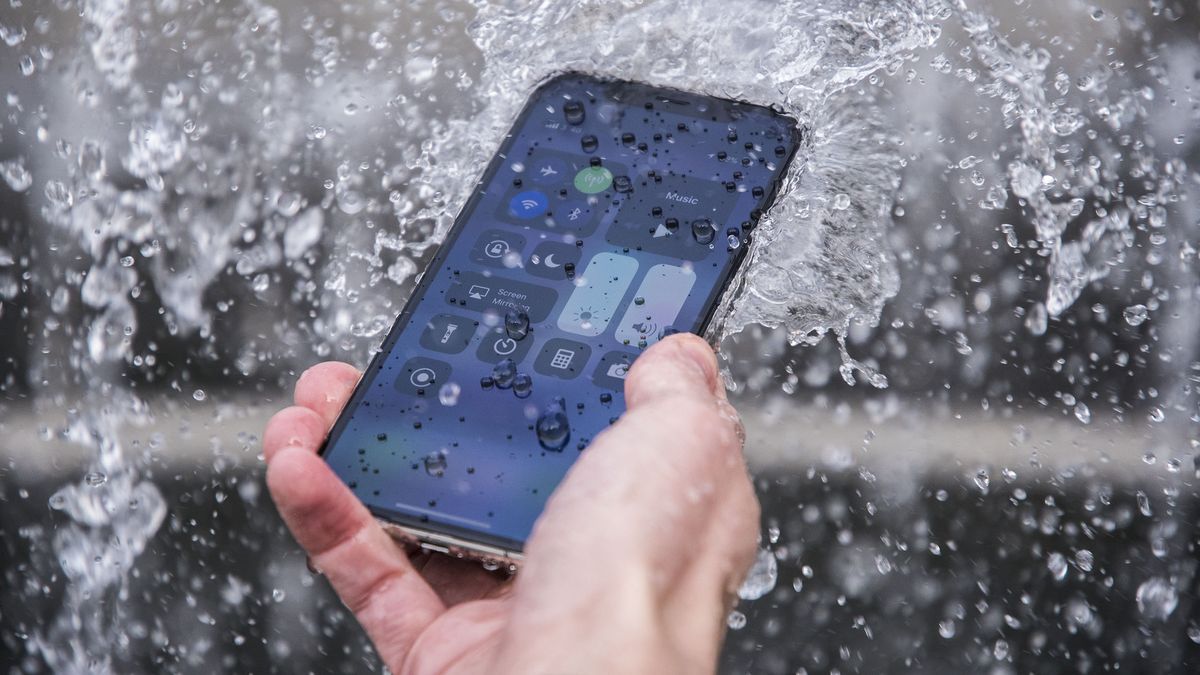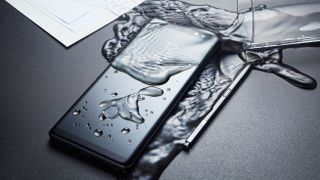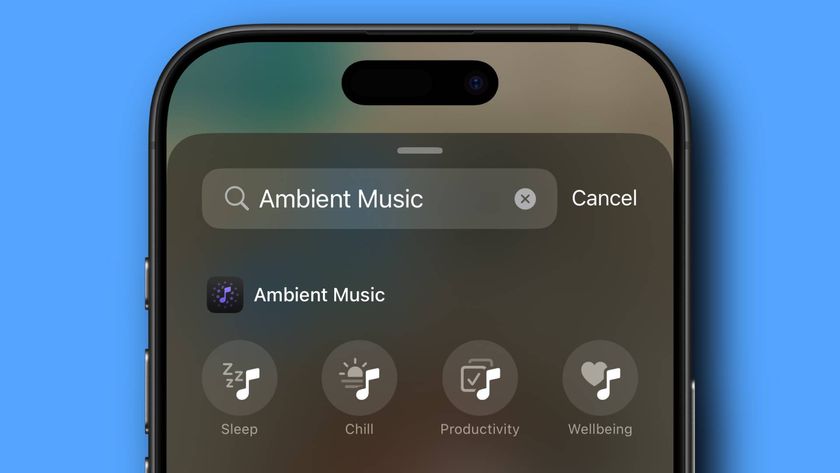How waterproof is your phone? IP68, IP67 and other IP ratings explained
Can your phone take a dunk? Here’s how to find out

It’s common for manufacturers of phones, smartwatches and lots of other devices to claim products are waterproof, but what do the ratings touted around by the likes of Apple, Sony, Samsung and more actually mean?
You’ll likely hear these firms referring to 'IP rating'. This is the international standard that defines the degrees of protection devices provide against liquid, dust and solid objects.
Devices including the iPhone 12, iPhone SE (2020), Samsung Galaxy S21, OnePlus 8 Pro, and even the Apple Watch 6 all make the claim of being water resistant, as do some lower end and older devices, but they don't all have the same IP rating.
You’ll typically see numbers such as IP67 when referring to the iPhone SE (2020) and a number of older iPhones like the iPhone 8, while the number IP68 is far more common on recent high-end handsets, like the iPhone 11 range, the Samsung Galaxy S21 range, and the Google Pixel 5. While these are the two numbers you'll see most often, they're not the only ones.
What does IP mean?
Those letters 'IP' refer to “ingress protection”, which in layman's terms means how easily dust and water can intrude on the internals of your device.
The IP part of the term won’t change, so it’s the numbers you’ll actually need to look at to work out how resilient your device is designed to be.
The first number in the sequence refers to the solids protection of the device. That means it’ll tell you how likely it is for dust to get into the device and whether for example it's likely to be a problem if you take your device to the beach and drop it in the sand.
Get daily insight, inspiration and deals in your inbox
Sign up for breaking news, reviews, opinion, top tech deals, and more.

Mostly you’ll only see the number five or six displayed here. The number five means the “ingress of dust is not entirely prevented, but it must not enter in sufficient quantity to interfere with the satisfactory operation of the equipment; complete protection against contact.”
However, if it's a six, it'll be more protective as the definition reads “no ingress of dust", and it offers complete protection.
Sometimes you'll also see a rating like IPX8, which is where the company doesn't reveal the number for its product's dust protection so instead replaces it with an 'X'.
What does the second number mean?
The second number in the IP rating refers to how waterproof the device is, and it's a little more complicated than the first number.
Almost all mobile devices have an IP rating with a number of at least three or four, which protects against splashing or spraying water and ensures your device doesn’t get instantly ruined by the rain when you’re using it.
The numbers you’ll be interested in start at five. That is protection against “water projected by a nozzle (6.3mm) against enclosure from any direction.” If your IP rating is number six, it’ll protect against “water projected in powerful jets (12.5mm nozzle) against the enclosure from any direction.”

Truly waterproof devices are those with numbers from seven onward, but they still vary. The number seven means “ingress of water in harmful quantity shall not be possible when the enclosure is immersed in water under defined conditions of pressure and time (up to 1 m of submersion)."
A rating including an eight for the second number will refer to devices that can handle submersion beyond 1 meter, but no device is ever completely waterproof.
The official definition of the top water resistant number (nine) is, "the equipment is suitable for continuous immersion in water under conditions which shall be specified by the manufacturer. Normally, this will mean that the equipment is hermetically sealed.
However, with certain types of equipment, it can mean that water can enter but only in such a manner that it produces no harmful effects.”
What phones include what IP ratings?
So no phone is 100% waterproof. It’s always possible that you’ll get a bit of water seeping into your device if you submerge it at very deep depths or leave it there for a long time.
If you're looking for one of the most durable smartphones, there are many rugged choices including the Ulefone Armor 9 FLIR, Blackview BV9900 Pro, and Doogee S96 Pro, that are designed specifically to be protected from vibration, shock, dust and water.
- Check out our selection of the best rugged phones on TechRadar Pro
If you're after a normal phone, we'd recommend listening to each manufacturer's individual advice that you can find on the official websites of each device maker. But if you have a high IP rating it’s likely you’ll be able to use your device in the bath or near a swimming pool without having to worry.
IP67 devices include a number of iPhones, such as the iPhone SE (2020), iPhone X, iPhone 8, and iPhone 7, plus some mostly older handsets from other companies, like the Huawei Mate 10 Pro, Google Pixel 2 and HTC U11.
IP68 certified devices include the likes of the Samsung Galaxy S21 range, the Samsung Galaxy Note 20 range, the iPhone 12 range, the iPhone 11 range, the LG Velvet, the Sony Xperia 1 II, the Oppo Find X2 Pro, and a wide variety of other mostly high-end handsets.
However, it's worth noting that - particularly once you get to the IP68 level - not all phones with that rating are equally water resistant. It just means they've reached the minimum requirement for it.
So for example, both the Samsung Galaxy S21 Plus (which Samsung claims can be submerged up to 1.5 meters for up to 30 minutes), and the iPhone 12 Pro (which Apple says you can submerge for up to 6 meters for up to 30 minutes) are IP68 rated. So it can be worth checking beyond just the rating.
What about other water resistance ratings?
While IP ratings are the main water resistance ratings you'll find on phones, if you have a wearable you might have noticed it's listed as '5ATM' or similar.
The ATM bit means 'atmospheres' but what it's really telling you is the amount of water pressure the device can withstand. The first number covers that - with a 1 being depths of 10 meters, a 5 being depths of 50 meters, and so on.
So that 5ATM rating your smartwatch might have means it can survive water pressure at depths of 50 meters. However, it's not quite that simple, as that rating is only for when stationary - it can be a very different story if swimming, for example.
In fact, impressive as 5ATM might sound, it doesn't actually guarantee that it's even safe to swim with the device - though it will usually at least be rain and shower-proof. Many wearables can be taken swimming though, you just have to make sure they specifically say as much.
Less commonly you might also see a number followed by 'bar'. This is similarly a unit of pressure, and 1 bar is almost exactly the same as 1ATM. Handily, many wearables just list the actual depth, such as 10 meters, but again, that doesn't necessarily mean you can actually dive to depths of 10 meters with the device.
A wide range of wearables will have one of the above ratings. For example, the Apple Watch 6 is listed as water resistant to 50 meters, the Garmin Vivomove HR has a 5ATM rating, and the Samsung Galaxy Watch 3 has both a 5ATM and IP68 rating.
It’s common for manufacturers of phones, smartwatches and lots of other devices to claim products are waterproof, but what do the ratings touted around by the likes of Apple, Sony, Samsung and more actually mean?
You’ll likely hear these firms referring to 'IP rating'. This is the international standard that defines the degrees of protection devices provide against liquid, dust and solid objects.
Devices including the iPhone 12, iPhone SE (2020), Samsung Galaxy S21, OnePlus 8 Pro, and even the Apple Watch 6 all make the claim of being water resistant, as do some lower end and older devices, but they don't all have the same IP rating.
You’ll typically see numbers such as IP67 when referring to the iPhone SE (2020) and a number of older iPhones like the iPhone 8, while the number IP68 is far more common on recent high-end handsets, like the iPhone 11 range, the Samsung Galaxy S21 range, and the Google Pixel 5. While these are the two numbers you'll see most often, they're not the only ones.
James is the Editor-in-Chief at Android Police. Previously, he was Senior Phones Editor for TechRadar, and he has covered smartphones and the mobile space for the best part of a decade bringing you news on all the big announcements from top manufacturers making mobile phones and other portable gadgets. James is often testing out and reviewing the latest and greatest mobile phones, smartwatches, tablets, virtual reality headsets, fitness trackers and more. He once fell over.












